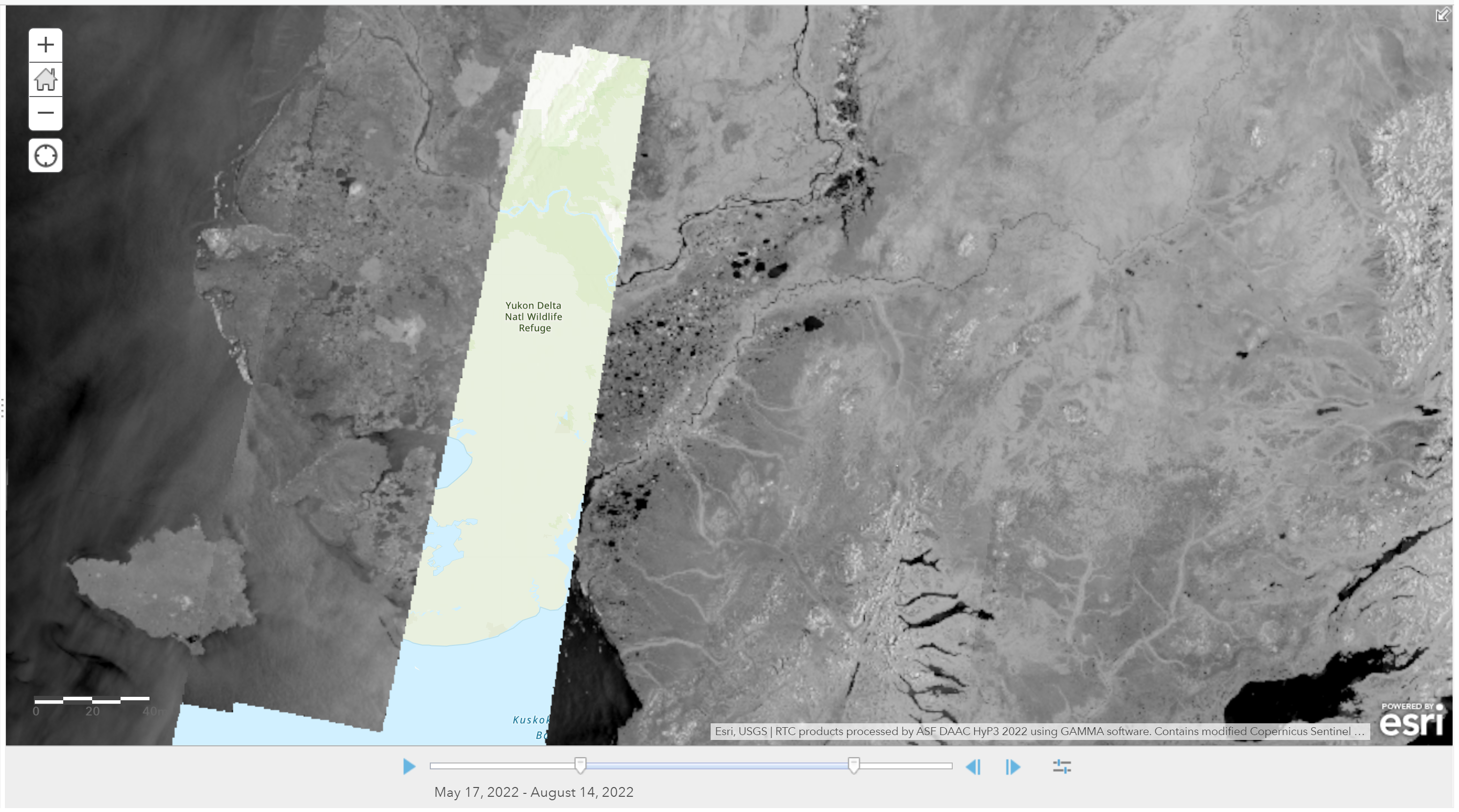Sentinel-1 Mission¶
The Sentinel-1 satellite constellation is part of the Copernicus Earth Observation program, coordinated by the European Space Agency (ESA) on behalf of the European Commission (EC). Sentinel-1 satellites carry C-band Synthetic Aperture Radar (SAR) instruments for global, around-the-clock imagery acquisition, even through cloud cover.
The mission was designed to support surface deformation applications, and the stable orbits and consistent acquisition plans of the Sentinel-1 satellites make it easy to generate high-quality Interferometric SAR (InSAR) products. These products can measure deformation to the centimeter scale, though the 5.6-cm wavelength of the C-band SAR sensor limits the viability of InSAR in densely vegetated areas.
The relatively short interval between acquisitions makes this SAR dataset a very useful tool for monitoring rapid or sudden landscape changes. In addition, SAR can image the earth's surface through cloud or smoke cover and does not require sunlight, so valid imagery can be collected on every pass. This is particularly useful for monitoring conditions during natural disasters such as hurricanes or wildfires, or in areas that are prone to frequent cloud cover.
More information about the mission is available from the European Space Agency Sentinel-1 Mission website.
The Sentinel-1 Constellation¶
The Sentinel-1 mission was designed to be a two-satellite constellation, though there have been periods when only one satellite has been available for image acquisition.
- Sentinel-1A was launched April 3, 2014, and is still actively acquiring imagery.
- Sentinel-1B was launched April 25, 2016, but ended its mission on December 23, 2021.
- Sentinel-1C was launched December 5, 2024, replacing Sentinel-1B in the constellation, and has been acquiring imagery regularly since March 26, 2025.
Each Sentinel-1 satellite has a 12-day repeat cycle, and they all use the same orbit pattern. When there are two active sensors in the constellation, their orbits are offset 180 degrees to allow repeat passes every 6 days. In this scenario, most global landmasses are imaged every 12 days. However, some areas of particular interest to the EC, including Europe and areas undergoing rapid changes due to uplift or subsidence activity, are imaged every 6 days.
Refer to the Sentinel-1 Observation Scenario for more information on the acquisition plans that have been used to meet mission goals under different constellation configurations.
Transition from Sentinel-1B to Sentinel-1C¶
As of December 23, 2021, Sentinel-1B was no longer able to acquire data. An anomaly related to the power supply could not be repaired, and the satellite has been decommissioned. Refer to ESA documentation of the end of the Sentinel-1B mission for more information.
The loss of Sentinel-1B resulted in a significant reduction in the spatial and temporal coverage of the Sentinel-1 mission. Refer to this article by Iain Woodhouse for an illustration of the global impact of the Sentinel-1B failure. The image below illustrates a gap in the acquisitions over Alaska. This area of the Yukon-Kuskokwim Delta did not have a Sentinel-1 acquisition during the summer of 2022 until August 15.

The gaps in coverage were particularly noticeable the first few months after Sentinel-1B lost power, but some areas continued to have little or no coverage in the period from December 2021 to April 2025, when Sentinel-1C began acquiring data regularly. Keep this in mind as you search for data in your area of interest. If there are fewer results than you would expect, you can download acquisition plans for the mission from ESA to view the acquisition plan for your area and time period of interest.
The Future of the Sentinel-1 Mission¶
Now that Sentinel-1C has replaced Sentinel-1B, and Sentinel-1A continues to acquire data, the constellation has returned to the same observation scenario used when both Sentinel-1A and Sentinel-1B were active. The Sentinel-1A platform is approaching the end of its mission, however, and plans are underway to launch Sentinel-1D to replace it.